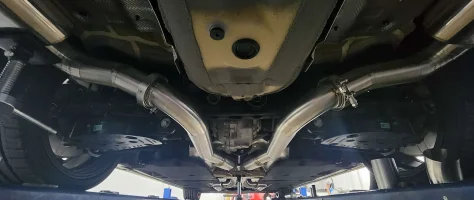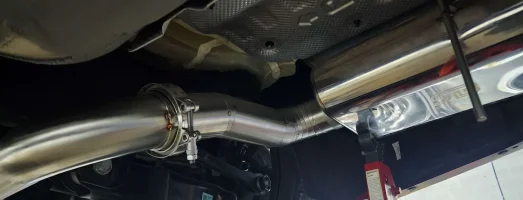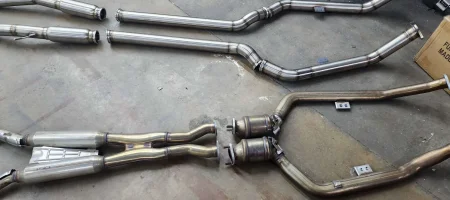I figured that the bottleneck issue at the manifold was going to come up... and that is perfect logic and the physics tell us we will hit a wall at some point. The video does a great job explaining it and showing it.
I'm not trying to make 700+hp, nor do I even want to. If doing automotive modification/customization since 1995 has taught me anything, it has taught me that the more parts, the more changes, the more alterations, and the more power, = less, and less, and less reliability, streetablility, and comfort.... in respect to comparing the
relatively care free ownership experience of a bone stock car vs the constant maintenance, tinkering, adjusting and fixing required for most highly modified ones. I've had this conversations with many people who have come to me saying "I want ALL this, and this, and this, and this, and 1000hp!, but I want to just look good, drive it and park it. I don't want to have to fiddle with it constantly". Well, enough money and time can buy you just about anything you want; but the average person can't shell out enough money to turn a Stinger into a Mclaren or Lamborghini. The reason those manufactures exist is for the people who can afford it, to buy that experience off the showroom floor and it's already
designed for the experience they want.
For every car, engine and drivetrain combination, there's a sweet spot for the best of both worlds.
That's the kind of work I do; build projects with the right balance, or "complete package" if you will, with a combination of customization, performance
AND a relaxed, quality ownership experience.
My HP goal for my K8 is 550'ish. That's below the HP "celling" of when the bottleneck in the manifold would start to become an issue for the volume of air needing to pass through it. This logic tells me that the bottleneck at the manifold will not be an issue for me.
To calculate the potential reduction in backpressure, I used the following calculation to determine volume for air:
To calculate the vessel volume, square the radius, multiply by the length, then finally multiply by Pi.
(
Vessel Volume Calculator - Calculator Academy)
Vessel radius:
A 2.5" exhaust pipe = 63.5mm, which the radius of that = 31.75mm and =
.0317m
A 3” Exhaust pipe = 76.20mm, which the radius of that = 38.10mm and =
.0381m
Vessel Length:
I don't know the exact length of the K8 exhaust from cat to rear, so just for argument sake, I will use 5 feet, which is 60", that =
1.524m
2.5” exhaust @ 60in:
.0317m x 1.524m x Pi =
a vessel volume of .00481
3” exhaust @ 60in:
.0381m x 1.524m x Pi =
a vessel volume of .00694
So the math tells us what we already know; a larger diameter exhaust pipe can hold more volume of air, and therefor reduce backpressure at the transition from 2.5" to 3". Logic says that if the transition to a large volume chamber is is 4ft away from the engine, vs 8' away at the back of the car, the sum of the total backpressure at the source should be reduced.
With all that said..... what harmonic and/or resonance issues are known with a 3" exhaust...?









